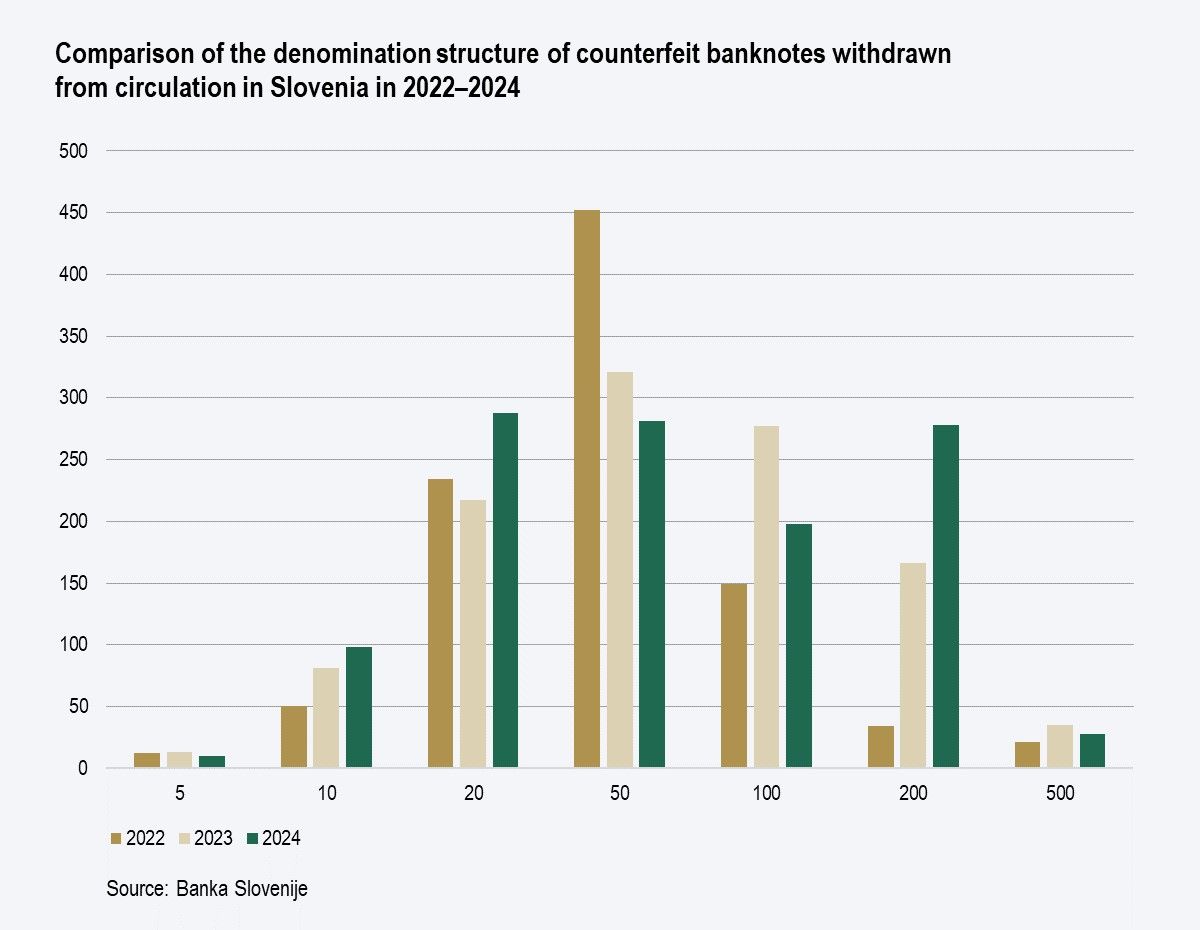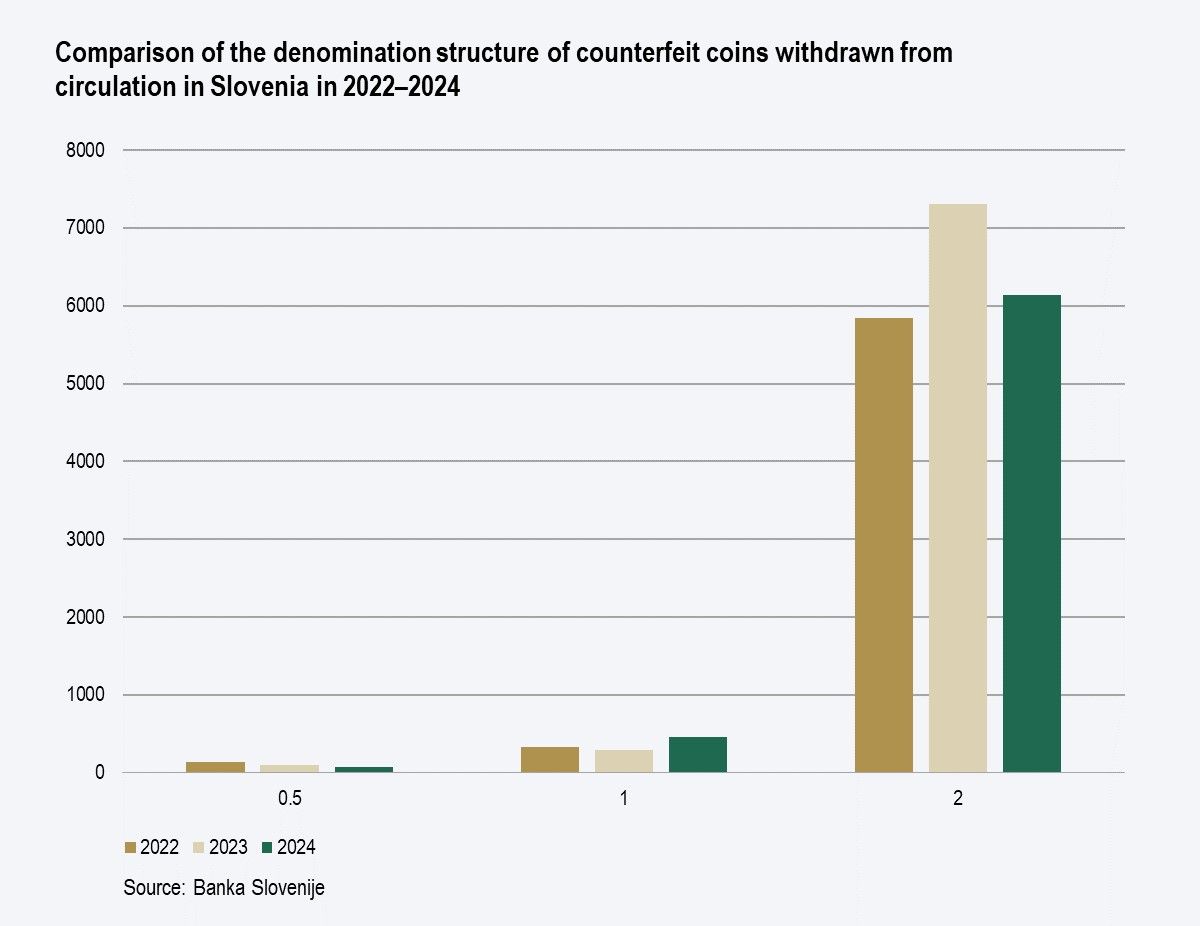
Counterfeit Prevention and Online Training
The fight against counterfeit money is a Europe-wide concern, and is the responsibility of various international and national bodies. The national banknote and coin analysis centres established in each EU Member State and the ECB’s Counterfeit Analysis Centre closely monitor seized counterfeit banknotes and coins.
The information obtained is stored in a common database, and is shared with the competent national authorities and other bodies involved in the fight against counterfeit money. The ECB also works closely with Europol, Interpol and the European Commission.
Euro banknotes are protected against counterfeiting by security features produced with the latest technology.
Although the euro’s stability makes it particularly attractive to counterfeiters, the number of counterfeit banknotes detected is negligible compared with the number of banknotes in circulation.
Check the authenticity of banknotes and coins when receiving them
Counterfeit banknotes and coins are completely worthless. If you accept a counterfeit banknote, you will receive no compensation. It is therefore vital to check the authenticity of banknotes and coins as soon as you receive them. It is a criminal offence to pass on a banknote that you suspect to be counterfeit.
Professional cash handlers are usually more alert to counterfeits, but many individuals are not sufficiently aware of the dangers of receiving counterfeit banknotes or coins.
How can I determine whether a banknote or coin is authentic?
The authenticity of euro banknotes can be checked quickly and simply using the FEEL, LOOK and TILT method.
Banka Slovenije also invites all cash users to try our e-learning tool, where you can learn the knowledge and skills to help you identify authentic banknotes and coins.
What should I do if I suspect a banknote is fake?
If you suspect a banknote is a counterfeit, closely check its security features. Check several security features: one is not enough! Use the FEEL, LOOK and TILT method, and any additional aids for checking the authenticity of banknotes that you may have. Compare the banknote with an authentic banknote and look for differences, not similarities.
If you have any doubts about the authenticity of a banknote or coin, do not accept it.
If despite following this process you still have doubts regarding the authenticity of a banknote or coin, you can take it to be checked at the Banka Slovenije counters.
I have found a counterfeit banknote or coin. What should I do?
If you have already accepted a banknote or coin that you suspect to be counterfeit, inform the police immediately (by phoning 113).
Try to remember where, when and from whom you received the banknote or coin. This information is often very helpful in tracking down counterfeiters and those who distribute counterfeits.
Counterfeit and suspicious banknotes and coins should be handed over to the police. If the banknote or coin later proves to be genuine, you will get your money back.
Passing counterfeit banknotes or coins into circulation is a criminal offence. Counterfeits are worthless and cannot be exchanged for other banknotes.
General tips for professional cash handlers:
Do not argue with a customer.
Try to remember as much as possible about the customer.
If they leave by car, remember the registration number and model of the vehicle (if possible).
Do not put yourself at risk.
Detailed information may be found on the ECB website.
Counterfeit banknotes in 2024 (Eurosystem)
A total of 554,000 counterfeit euro banknotes were withdrawn from circulation in the Eurosystem in 2024, which is still one of the lowest figures to date relative to the number of banknotes in circulation. Compared to the last three years, the total number of counterfeits detected has increased slightly, but it still remains lower than in the years before the Covid 19 pandemic. Just 18 counterfeits were withdrawn for every million banknotes in circulation, which is much lower than in the years immediately after the introduction of the euro. The likelihood of receiving a counterfeit euro banknote therefore remains small, which means that euro banknotes remain a secure and trustworthy means of payment.
The €20 and €50 notes were the most counterfeited banknotes in 2024. Together they accounted for more than 75% of all counterfeits withdrawn from circulation.
Table 1: Distribution of counterfeit euro banknotes by denomination at Eurosystem level in 2024
Denomination | €5 | €10 | €20 | €50 | € 100 | €200 | €500 |
Breakdown, % | 1.3 | 6.8 | 36.0 | 43.6 | 7.9 | 3.8 | 0.6 |
Some 97.8% of the withdrawn counterfeit euro banknotes were seized in euro area countries, 1.3% were seized in EU Member States outside the euro area, and 0.9% in the rest of the world.
Counterfeit cash in 2024 (Slovenia)
A total of 1,181 counterfeit euro banknotes were withdrawn from circulation in Slovenia in 2024, up approximately 7% on 2023. Despite the increase, the number of seized counterfeits in circulation in Slovenia remains relatively low.
The number of withdrawn euro counterfeit €10, €20 and €200 notes increased, while the number of withdrawn counterfeit €5, €50, €100 and €500 notes decreased. The total value of the counterfeit euro cash detected in Slovenia amounted to EUR 110,240 last year, up approximately 11% on 2023.
Table 2: Distribution of counterfeit euro banknotes by denomination in Slovenia in 2024
Denomination | €5 | €10 | €20 | €50 | €100 | €200 | €500 |
Number | 10 | 98 | 288 | 281 | 198 | 278 | 28 |
Breakdown, % | 1 | 8 | 24 | 24 | 17 | 24 | 2 |
A total of 6,665 counterfeit euro coins were withdrawn from circulation in Slovenia in 2024, down approximately 13% on 2023. The €2 coin remains the most common counterfeit.
Table 3: Distribution of counterfeit euro coins by denomination in Slovenia in 2024
Denomination | 50-cent | €1 | €2 |
Number | 72 | 453 | 6.140 |
Breakdown, % | 1.1 | 6.8 | 92.1 |
Compared with the net number of genuine euro banknotes and euro coins issued, the number of counterfeits in circulation is very low.


